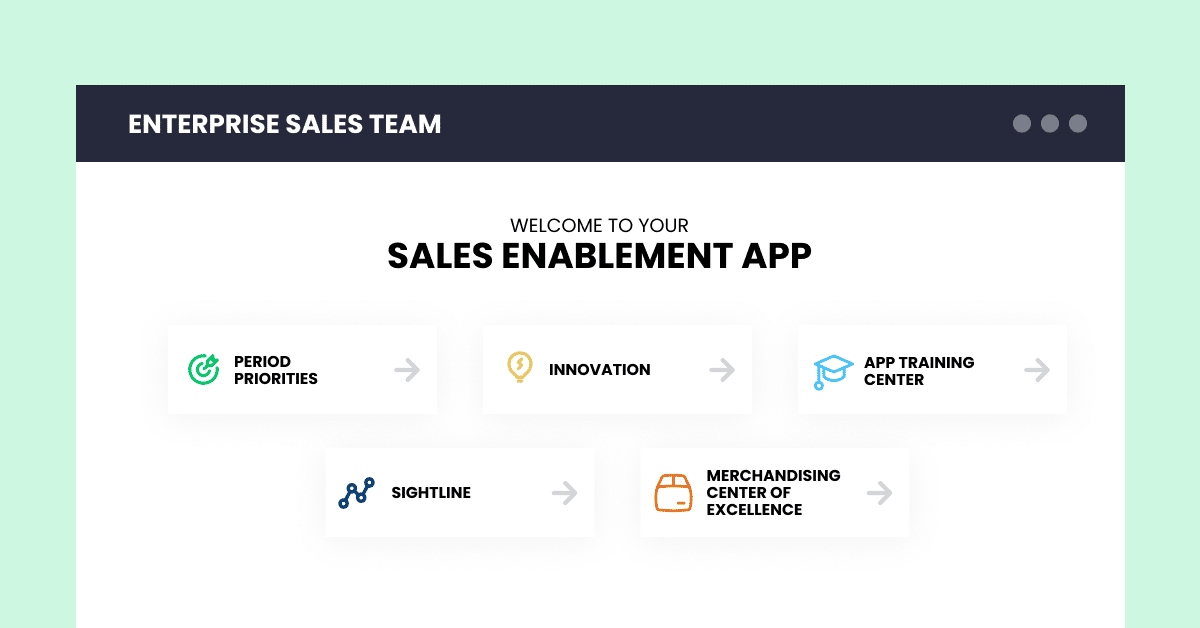Do you have to wade through a sea of irrelevant information before finally finding the sales asset you were looking for? Have your sellers ever lost face with a potential customer because they couldn’t find the perfect asset to send out on time, or, even worse, they accidentally sent out an outdated piece? If so, your business is one of many that deals with the constant daily struggles that come with disorganized content.
Content chaos leads to all sorts of problems for marketing and sales teams. From campaign inefficiencies to inconsistent messaging and branding, disorganized content causes frustration on both sides. Sellers are unable to find what they need when they need it, and marketers waste their time putting together resources that never see the light of day.
The key to overcoming these challenges lies in effective content organization, which, when done correctly, enhances searchability, user experience, and overall operational efficiency. In this guide, we will explore various strategies you can use to organize your sales content, including by brand, go-to-market strategy, product, language preference, division, geographic location, and sales role.
1. Organized by Brand

If your business houses multiple brands, it’s important to make sure your content reflects the values of each individual brand while still upholding the message of the larger company. Unfortunately, that’s easier said than done, and mixing and mingling assets together may cause inconsistent messaging, which confuses customers and dilutes brand identity.
Organizing information by brand makes it easier for marketers to manage content across the entire company. Sellers within each segment can access the assets that correspond to their brand, ensuring that messaging remains consistent and integrity is preserved.
2. Organized by Go-to-Market Strategy

When sellers can’t find content that aligns with the current sales or marketing initiatives, it undermines the effectiveness of the campaign. However, by structuring content around go-to-market strategies, marketers can prepare sellers to tackle targeted campaigns and actually make progress toward strategic objectives.
For instance, taking this approach during a new product launch helps ensure that all content used by sellers reinforces the most important messages, maximizing the impact of the go-to-market strategy and driving successful market penetration.
3. Organized by Product

Managing and updating product-specific information is a challenge by itself. Throw in a slew of sellers trying to locate the most relevant assets for a given product amidst a haystack of unorganized files, and you have the makings of disaster on your hands.
For companies that offer a variety of products and solutions, like tech companies, organizing content by product can be an effective way to limit this confusion. Sellers gain easy access to product-specific information, and marketers can make sure that the available assets are always packed full of the most updated information.
4. Organized by Language Preference

Catering to a global audience is hard enough without throwing content management into the equation. However, organizing content by language preference can be an effective solution, especially for multinational corporations that provide content in multiple languages. This process enhances the user experience for global audiences and improves both localization and international reach.
5. Organized by Division

Companies with several divisions often operate like separate entities. Large companies often have distinct divisions, creating significant gaps that lead to disconnect, miscommunication, and overall inefficiencies.
These big companies may find organizing content by division to be a useful solution. This method allows for the creation of content that meets department-specific needs and opens up more lines of communication within divisions so that everyone can stay updated on all processes.
6. Organized by Geographic Location

As businesses expand, they may end up with locations spread out across different regions. These locations may need their own region-specific content that addresses market differences and variations in legal requirements.
A company that has offices worldwide, for example, may employ this organization strategy for regional campaigns, supporting employees located within each market with localized marketing and sales content that meets the unique needs of that region.
7. Organized by Sales Role

We can’t forget the diversity that exists within the sales team itself as well. Different members of the sales team require different types of assets to be able to carry out their duties effectively. To overcome this hurdle, some teams may choose to structure sales content around each sales role, providing the most relevant resources for various stages of the sales funnel. From account executives to customer success managers, each member of the team will have tailored content that enables them to get the job done better and faster.
With so many organizational strategies to choose from, selecting the right one really comes down to understanding your company’s unique goals. How does your team structure content right now? What’s working? What’s not? By diving deep into your current content management strategy, you can better understand the needs of your team and pinpoint the potential solutions that will alleviate your pain points.

Comments are closed.